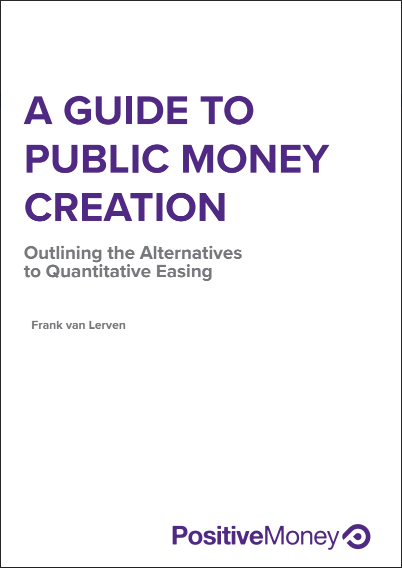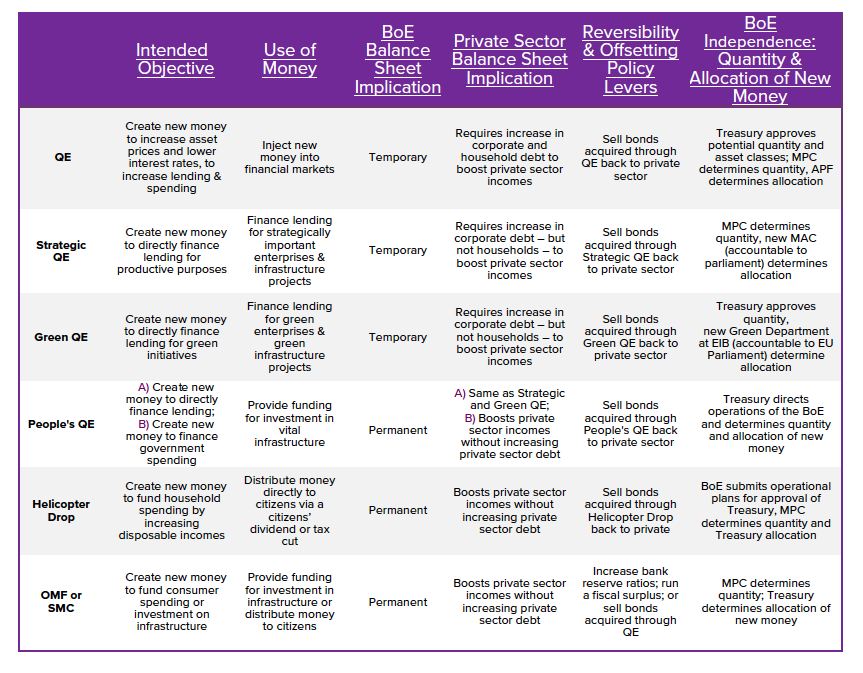A guide to public money creation: Outlining the Alternatives to Quantitative Easing

Despite a surge in growth in 2014, a number of issues still threaten the sustainability of the UK’s economic recovery:
Global growth has been at its lowest since the 2008 financial crash. Low productivity is puzzling UK policymakers. UK households have exceptionally high levels of debt and the lowest savings ratio in history.
Low inflation risks turning into deflation. Ultra-loose monetary policy – setting Bank of England interest rates close to zero – and the use of Quantitative Easing (QE), has fuelled asset price bubbles in the financial and property markets.
Indeed, there is a growing consensus that policymakers aiming to keep another recession at bay have run out of ammunition.
Accordingly, such conditions have brought newfound interest to a number unconventional monetary policy proposals, also known as ‘Helicopter Money’, ‘Overt Monetary Finance’, ‘Strategic QE’, ‘Green QE’, ‘Green Infrastructure QE’, ‘People’s QE’ and ‘Sovereign Money Creation’. These unconventional monetary policy proposals are similar in that they all advocate the proactive creation of central bank money to stimulate growth in the real economy.
Therefore, Positive Money uses ‘Public Money Creation’ as an umbrella term for all of these proposals. With the subject of central bank money creation now part of mainstream debates, there is confusion surrounding the different Public Money Creation proposals. While these proposals have similarities, they do have important differences, with distinct implications for the economy.
There is also some confusion regarding the differences between Public Money Creation proposals and the BoE’s on-going £445 billion QE programme. This ‘conventional’ QE shows that the central government is willing to create new money to stimulate the economy. Indeed, proposals for Public Money Creation first emerged because they intend to provide a policy alternative to QE, which is believed by many not to have worked as intended.
The aim of our paper is to provide an accessible guide to QE and the different proposals for Public Money Creation. Instead of comparing the strengths and weaknesses of Public Money Creation proposals, we seek to demonstrate how each proposal would impact current operations at the BoE. This will give the reader an improved understanding of the differences between QE and each Public Money Creation proposal.

PDF Download:
Download Full Report Here (Free, PDF, 55 pages)